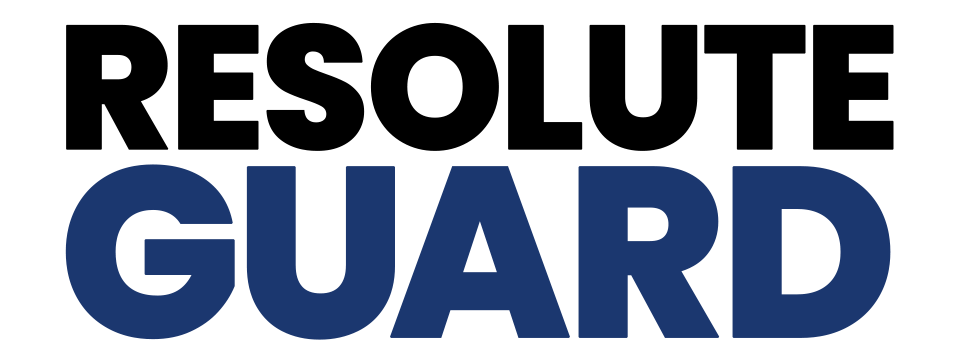Third Party Risk Management
- Home
- Third Party Risk Management
Third-Party Risk Management (TPRM): Safeguarding Your Organization from External Threats
In today’s interconnected business environment, organizations are increasingly dependent on third-party vendors, contractors, and service providers. While these partnerships are essential for business operations, they also introduce significant security and compliance risks. Third-Party Risk Management (TPRM) is the process of identifying, assessing, and managing the risks associated with these external relationships.
At ResoluteGuard, we have developed a Third-Party Risk Management (TPRM) program designed to help you evaluate and mitigate the potential risks posed by your third-party relationships. Our program provides you with the tools and expertise to assess third-party security posture, ensure compliance, and protect your organization from external threats.
Learn How We Help 500+ Public Entities with Third Party Risk Management:
What is Third-Party Risk Management (TPRM)?
Third-Party Risk Management (TPRM) refers to the practices and strategies used to identify, assess, and mitigate risks that arise from working with third-party vendors, contractors, and partners. These risks can include cybersecurity vulnerabilities, legal liabilities, financial instability, and non-compliance with regulatory requirements. A well-managed TPRM program ensures that your organization is protected from potential threats posed by external parties and that all third-party relationships are aligned with your company’s security standards.
Third-Party Risk Assessment
TPRM begins with a comprehensive risk assessment to evaluate the security posture, compliance standards, and financial stability of your third-party vendors and partners. This step helps identify any potential vulnerabilities and areas of concern before they become a risk to your organization.
Compliance Management
A TPRM program helps ensure that all third-party vendors comply with relevant industry regulations, including GDPR, HIPAA, PCI-DSS, and others. This is critical for avoiding compliance violations and potential fines.
Third-Party Contracts and SLAs
TPRM includes reviewing and managing third-party contracts and Service Level Agreements (SLAs) to ensure they contain the necessary clauses related to cybersecurity, data protection, and compliance. This helps reduce risks from legal disputes and ensures that vendors meet agreed-upon security standards.
Continuous Monitoring
Third-party risks are not static. With ongoing monitoring, your TPRM program ensures that the risks posed by third parties are continuously assessed. This allows you to stay informed about any changes in your vendors’ security measures or regulatory compliance status.
Data Protection and Privacy Controls
TPRM focuses on safeguarding sensitive data and ensuring that third-party vendors meet your organization’s data protection and privacy standards. This is especially important when sharing confidential business or customer data with external partners.
Vendor Risk Scoring
TPRM assigns a risk score to each vendor based on their security and compliance practices. This scoring helps prioritize which third-party relationships need immediate attention and which vendors are at the highest risk of causing security breaches or regulatory violations.
Incident Response and Remediation
If a third-party vendor experiences a security breach or compliance issue, your TPRM program ensures that your organization can respond quickly and effectively. This includes initiating incident response protocols, communicating with the vendor, and taking remedial actions to mitigate damage.
Key Benefits of Third-Party Risk Management (TPRM):
- Enhanced Security Posture:
By evaluating the security practices of your third-party vendors, TPRM helps you identify vulnerabilities and mitigate the risk of a data breach or cyberattack originating from external sources. Protecting your supply chain is critical to maintaining a strong overall security posture. - Regulatory Compliance:
Many industries have strict compliance requirements when it comes to third-party vendor relationships. TPRM helps you ensure that your third parties meet the necessary regulatory standards, reducing the risk of costly compliance violations. - Reduced Exposure to Financial and Operational Risks:
Poorly managed third-party relationships can expose your organization to significant financial and operational risks. With a robust TPRM program, you can identify risks early and take proactive steps to minimize their impact, including preventing disruptions to your supply chain or operational processes. - Mitigation of Data Privacy Risks:
Third-party vendors often handle sensitive business or customer data. A TPRM program ensures that your vendors follow data protection protocols, reducing the risk of data privacy breaches that can damage your reputation and result in regulatory fines. - Informed Decision-Making:
TPRM provides valuable insights and data on the risk profile of each third-party vendor, enabling you to make informed decisions about which vendors to partner with and which relationships need closer monitoring or termination. - Improved Vendor Relationships:
By ensuring that third-party vendors meet your security and compliance standards, TPRM helps create more trust-based and long-lasting partnerships. Vendors who understand and comply with your security expectations are more likely to maintain a high standard of service and cooperation. - Business Continuity:
TPRM helps you ensure that your third-party vendors are reliable and that their operations are resilient. This helps avoid disruptions in your supply chain or service delivery that could otherwise impact your organization’s ability to function effectively.
Why Choose ResoluteGuard’s TPRM Program?
At ResoluteGuard, we have developed a robust Third-Party Risk Management (TPRM) program that empowers your organization to assess and manage the risks posed by your third-party relationships. Our TPRM program offers:
- Comprehensive Risk Assessments:
Our TPRM program begins with a thorough assessment of your third-party vendors, evaluating their cybersecurity posture, compliance with industry regulations, financial stability, and more. - Ongoing Monitoring and Risk Scoring:
We provide continuous monitoring and periodic re-assessments of your vendors to ensure that they continue to meet your security and compliance standards. Risk scores allow you to prioritize which vendors need immediate attention. - Customizable Risk Management Plans:
We understand that every organization’s needs are unique. Our TPRM program offers customizable risk management plans that align with your specific business objectives and security requirements. - Incident Response and Support:
In the event of a third-party security breach or compliance issue, ResoluteGuard provides expert incident response and remediation support, ensuring that your organization can respond quickly and effectively to mitigate damage. - Compliance Assurance:
Our TPRM program helps you ensure that your vendors comply with relevant industry regulations, including GDPR, HIPAA, PCI-DSS, and others, reducing the risk of non-compliance and costly penalties. - Actionable Insights and Reports:
We provide actionable reports and insights on your third-party relationships, helping you make informed decisions about which vendors are a good fit for your organization and which require closer scrutiny. - Expert Guidance and Support:
Our team of cybersecurity and compliance experts provides ongoing guidance to help you navigate the complexities of third-party risk management, ensuring that your vendors adhere to the highest security and compliance standards.

Third-Party Risk Management Tools for Public Entities
- Prevalent: Comprehensive TPRM platform for assessments, monitoring, and reporting.
- EDR Solutions: Detect and respond to advanced threats with real-time monitoring and analytics.
- Mobile Threat Defense (MTD): Protects against threats targeting mobile devices.
- 4Patch Management Tools: Automate and manage software updates across endpoints.
- Security Information and Event Management (SIEM): Centralizes log management and correlates endpoint data with other security systems.
Regulatory Compliance for Third-Party Risk Management
- GDPR (General Data Protection Regulation): Mandates that third parties processing EU citizen data comply with stringent data protection standards.
- HIPAA (Health Insurance Portability and Accountability Act): Requires public entities to ensure vendors handling health information adhere to privacy and security rules.
- NIST Standards: Public sector organizations in the U.S. are often required to follow NIST cybersecurity frameworks for third-party management.


Metrics for Evaluating TPRM Effectiveness
- Vendor Risk Scores: Quantify risks associated with each vendor based on assessments and monitoring.
- Incident Response Time: Measure the speed at which vendors address reported incidents.
- Audit Completion Rates: Track the percentage of vendors audited within a specified timeframe.
- Compliance Rates: Monitor vendor adherence to contractual and regulatory requirements.
- Cost of Vendor Failures: Calculate financial losses or penalties resulting from third-party incidents.
Emerging Trends in Third-Party Risk Management
- AI and Machine Learning: Use AI tools to predict vendor risks and detect anomalies in vendor activity.
- Blockchain for Transparency: Leverage blockchain to track vendor activities and ensure data integrity.
- Real-Time Risk Monitoring: Adopt tools that provide continuous, real-time updates on vendor security and compliance.
- Focus on ESG (Environmental, Social, Governance): Incorporate ESG considerations into third-party evaluations for public accountability.


Challenges in Third-Party Risk Management
- Templated policies establish standardized rules and practices for cybersecurity across the organization.
- Templated policies cover a wide range of cybersecurity aspects, including acceptable use, access controls, data protection, incident response, and more.
- Policies serve as educational tools for employees, raising awareness about cybersecurity best practices.
Build a Centralized Third-Party Risk Management Framework
A centralized framework ensures consistent management and oversight of third-party relationships across all departments within a public entity.
- Centralized Vendor Database: Maintain an up-to-date inventory of all third-party vendors, their services, and associated risks.
- Standardized Assessment Processes: Use uniform risk assessment templates and tools across departments.
- Cross-Department Collaboration: Encourage interdepartmental sharing of vendor risk information to identify shared vulnerabilities.


Enhance Risk Visibility with Vendor Tiers
Categorizing vendors into risk tiers based on their access to sensitive systems or data helps prioritize risk management efforts.
- High-Risk Vendors: Vendors with access to critical infrastructure or confidential citizen data.
- Moderate-Risk Vendors: Vendors providing operational support but with limited access to sensitive information.
- Low-Risk Vendors: Vendors offering non-critical or low-impact services.
Get Started and Learn More Today

Email a Specialist
Speak with a ResoluteGuard specialist to learn how you can improve your cybersecurity posture.

Schedule a Demo
Learn in real-time how ResoluteGuard can provide cybersecurity protection.

Give Us a Call!
Can’t wait to speak with us? Give us a call directly to learn how we can improve your cybersecurity posture.
